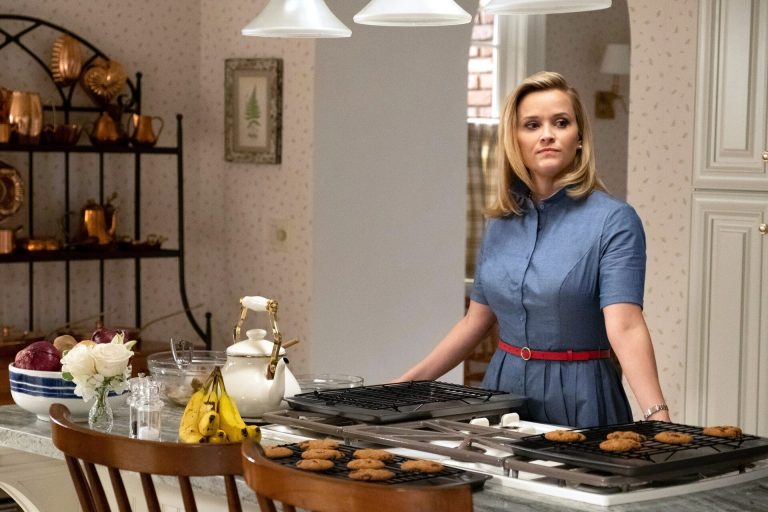
Originally issued in 2017 by Celeste Ng, Blazing Truths saw its transformation to the small screen in 2020 through a Hulu adaptation. The narrative arc remains consistent across both formats, orbiting around the entangled lives of two distinct families set in 1990s Shaker Heights, Ohio.
Centric to the storyline is Mia, an itinerant artist and photographer, accompanied by her daughter, Pearl, as they embrace a nomadic lifestyle rooted in Mia’s creative endeavours. Pledging to make Shaker Heights their permanent residence soothes Pearl’s yearning for stability amidst their transient existence.
In Shaker Heights, Pearl quickly connects with the Richardson clan through Moody, discovering a stark contrast in their world – one marked by affluence and comfort. Elena Richardson, a local journalist, and Bill, her attorney husband, provide a stark backdrop to Pearl’s and Mia’s life. As their paths cross, the Richardsons, including siblings Trip, Lexie, and Izzy, become increasingly entwined with Mia and Pearl in ways unexpected.
Commencing with a mysterious conflagration at the Richardson household, the story implicates Izzy, the youngest Richardson, though her whereabouts remain unknown. The Hulu series shapes the narrative into more than a criminal investigation, delving into themes such as race, class, motherhood, and selfhood. Unlike the book’s ambiguous racial dynamic surrounding Pearl and Mia, the show boldly confronts and unpacks racism.

Izzy’s character is pivotal in both the novel and series, with notable distinctions in her development. Book Izzy ignites her family home as a silent act of rebellion, while series Izzy is openly confrontational with her mother Elena, a tension that builds dramatically on screen. Izzy’s burgeoning artistic endeavors and bond with Mia, along with the expanded exploration of her sexuality and social circles, add depth to her character in the adaption.

The relationship dynamics of Elena and Mia, skillfully brought to life by Reese Witherspoon and Kerry Washington, take center stage in the series. Whereas the book portrays more subdued interactions, the series offers a dramatic milieu that fosters tension and intimacy between the two women. Subplots such as a shared book club meeting amplify their onscreen discord, culminating in events that escalate their narrative conflict.

The narrative lens zooms into Bebe and May Ling’s tale, showcasing Bebe’s hesitation due to socio-economic and racial disparities. Contrary to the book, the show amplifies this tension by introducing confrontational scenarios, such as Bebe crashing a baby shower. Financial hardships are represented divergently, with Bebe’s struggle seemingly less pronounced on screen.
Shrouded in secrecy, Mia’s history unfolds as a tale of young parenthood and artistic passion, infusing the narrative with layers of enigma and resilience. The surrogate arrangement that facilitates Mia’s entry into motherhood unfurls distinctively across both formats. Moreover, the novel and the visual portrayal diverge on Mia’s personal relationships and the deeply personal cost of her artistic aspirations.

Heightened drama is infused throughout the series, in contradistinction to the novel’s understated tone. The amplification of social issues, notably racial dynamics, is palpable on screen, diverging from the more implicit approach of the book, leaving viewers and readers with divergent interpretations.

The series extrapolates Elena’s past, presenting a visual exploration of her youth and her forfeited dreams. The juxtaposition of her young aspirations with her present-day reality injects the narrative with a sense of regret and missed opportunities.
The screen adaptation accentuates the friction between Mia and Pearl, building to a poignant denouement where Elena discloses Mia’s secrets. This contrasts with the book’s depiction of a subtler unraveling of their familial fabric.
A cinematic elaboration enhances the relationships and alliances amongst Pearl, Trip, and Moody. The series carves out a more pronounced love triangle, with heightened emotional stakes depicted through the characters’ intersecting desires.

The finale leaves gaps in resolution and a tangle of events leading up to the ominous fire. The narrative culmination differs in key details between media, leaving the viewer or reader with distinct takeaways about the fate of the Richardson and Warren families.